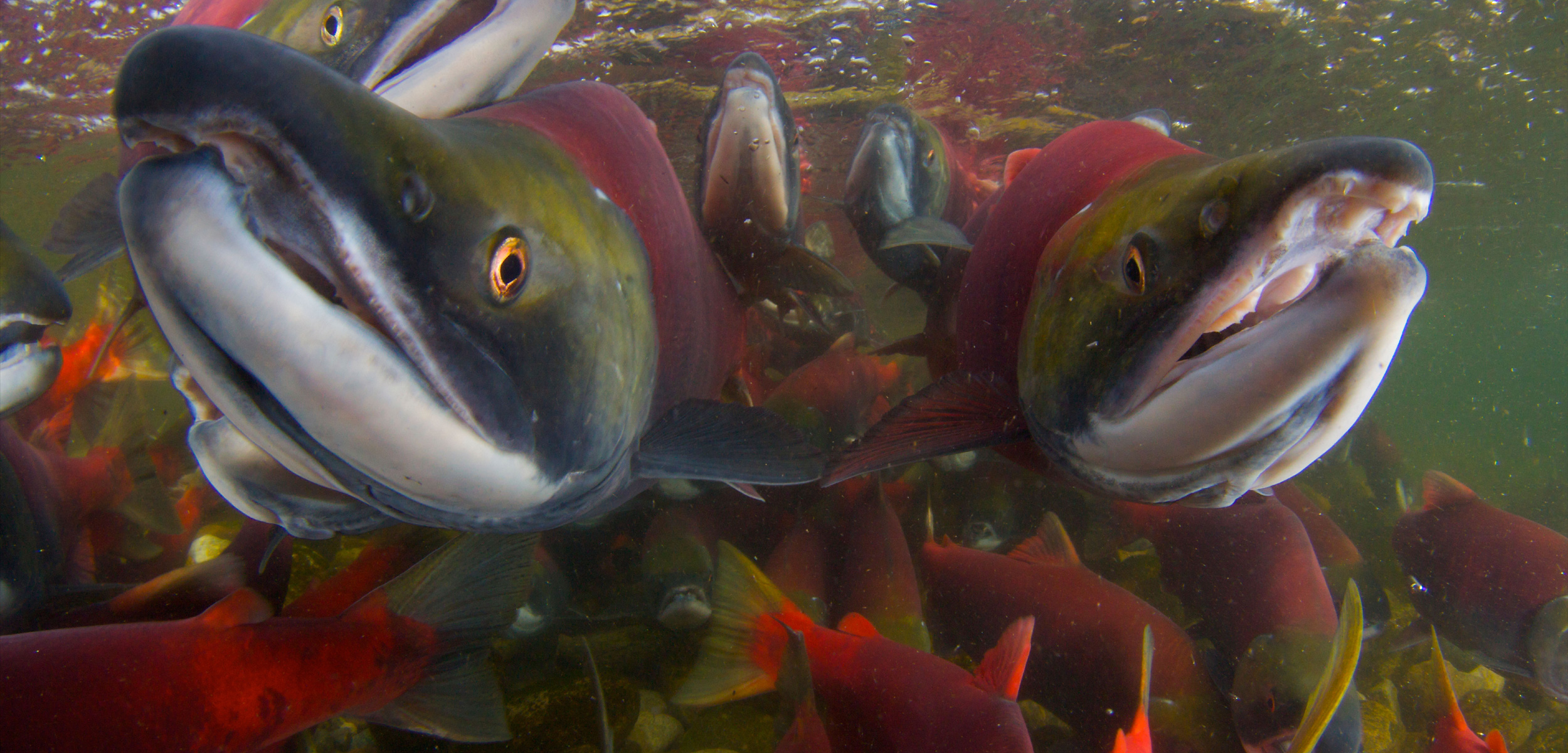Saving Canada’s Wild Salmon Policy
Canada already has a forward-thinking salmon management plan on the books. Now it just needs to implement it.
Article body copy
When Canada’s Policy for Conservation of Wild Pacific Salmon was announced in 2005, it was hailed as a major step forward for fisheries management in the country.
“It was a blueprint for how to manage, rebuild, and conserve wild salmon populations that puts conservation as the number-one priority,” says Aaron Hill, executive director of the Watershed Watch Salmon Society in Victoria, British Columbia. The most important part of the wild salmon policy, as it’s commonly known, is that it includes strategies and actions to achieve its goals, says Hill.
“That’s what makes the policy special,” he says. “It’s not just empty verbiage; it has some actual meat to it.” Or, it’s supposed to.
In the 12 years since the policy was finalized, very little has actually been done. The biggest issue has been a lack of monitoring of salmon populations, says Hill. In recent years, funding for salmon monitoring has been slashed repeatedly. An independent performance review in 2011 and the Cohen Commission’s inquiry into Fraser River sockeye salmon in 2012 both pushed for the policy’s implementation—to no effect.
“It’s been 12 years, and we still don’t have a plan, or know how much it will cost,” says Michael Price, a salmon researcher at Simon Fraser University in Burnaby, British Columbia.
Last month, Price and his colleagues released their own comprehensive review of the wild salmon policy’s monitoring efforts. What they found wasn’t encouraging.
Monitoring efforts have been declining for decades, says Price. Stream visits by government scientists to assess salmon populations fell by 34 percent in the decade after 2005, reaching an all-time low in 2014, the final year for which data is available. In 2014, government researchers assessed fewer than 500 streams, compared to the more than 1,500 in the 1980s.
“A rich legacy of escapement data—the data on the number of salmon returning to streams—is eroding rapidly,” says Price.
Overall, Price and his team found that of the 450 “conservation units” defined by the policy, they lacked sufficient data to adequately assess the health of half. In the policy, each conservation unit consists of a genetically distinct salmon population, which might spawn in hundreds of streams across the province, or in as few as one single stream.
For the conservation units for which they did have enough data, Price found that population abundances have declined significantly in the decade after the policy was created. “More than three million fish annually are not returning to BC’s north and central coasts,” says Price.
For the conservation units assessed as threatened, 42 percent would have improved had the Canadian wild salmon fishery been reduced, as required by the policy.
Things may be starting to change, however. Last year, Fisheries and Oceans Canada (DFO) held a series of public consultations as part of developing a five-year implementation plan for the policy. By email, a spokesperson for DFO said that a second set of meetings this fall will focus on finalizing the draft plan, which will outline “actions, target dates, and accountability for the next five years.”
Price says the most important aspect of the plan is that it includes federal money earmarked for implementing the policy.
The federal government has boosted funding for DFO in recent years, providing an extra CAN $200-million over five years for aquatic sciences, and money to hire 29 new scientists to help manage fisheries, including wild salmon. Price would like to see some of that money put in a fund reserved for implementing the wild salmon policy.
Despite DFO’s renewed efforts, Hill is concerned that much of the actual work of monitoring fish populations will fall to First Nations, NGOs, and other stakeholders, who will not be given the support they need. But Price sees closer cooperation between the department and its stakeholders as an opportunity.
“Society is changing,” he says. “First Nations are asserting more control and becoming co-managers of their resources. … DFO can partner with academics and nonprofits for monitoring, so we don’t just have to rely on DFO to come up with this fundamental data.”
But that also means that these partners must have a role in the decision-making process, he adds, with the power to contribute to fisheries and conservation decisions.
Both Hill and Price agree that the wild salmon policy itself does not need to change, and say that the majority of stakeholders, including the fishing industry, are on board.
“The policy is great,” says Hill. “We just want to see it implemented.”

